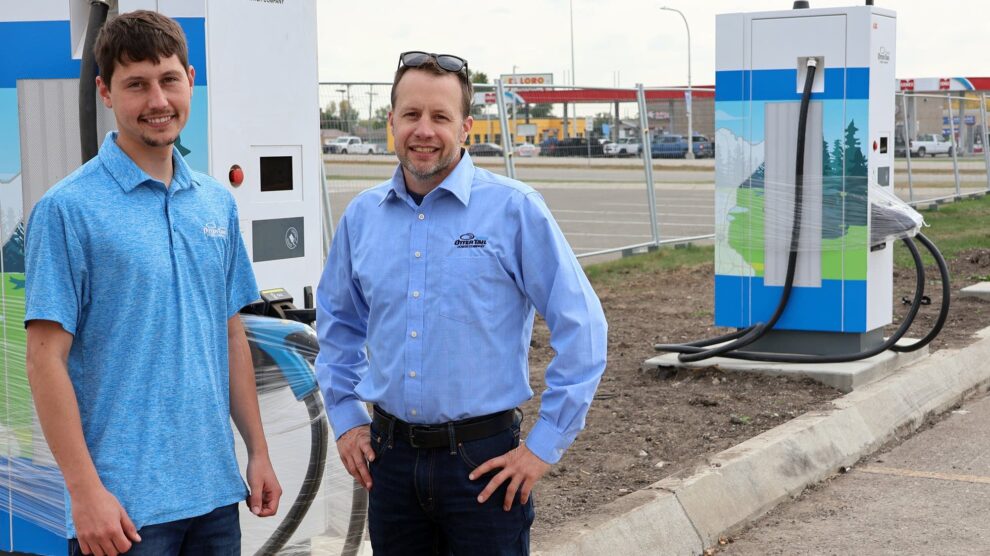Minnesota’s electric vehicle charging network continues to grow despite supply chain challenges. A new charging station near Interstate 94 in Fergus Falls will be among the largest in the state.
The utility collaborated with Tesla to build a site with 10 fast charging ports, and chargers that will accommodate three different charging connectors used on various EV’s, explained project manager Luke Meech.
Meech said this is one of 11 EV charging locations Otter Tail Power is building across western Minnesota from Hallock in the northwest to Lake Benton in the southwest.
“The infrastructure is lacking, and the private investment just isn’t going to be there any time soon, and hasn’t been there,” Meech said. “Otter Tail really saw an opportunity to try to step in and fill that gap.”

The Fergus Falls location just off I-94 shares a parking lot with two restaurants. Other eateries are across the street.
“It’s really important to have those extra amenities when somebody is thinking about stopping and charging,” said Otter Tail retail energy solutions manager Jason Grenier. “We’re really trying to do two things, not just charge vehicles, but bring commerce to our communities in rural Minnesota.”
This site reflects a move to larger and more powerful EV charging sites, especially along heavily traveled routes.
Meech said this site cost $750,000 to build, a cost shared with Tesla and partially offset by a $50,000 state grant.
It took roughly 18 months to gather the needed equipment because of supply chain limitations.
Those equipment delays are not likely to improve in the short term, according to Grenier, who said the utility has been told there is a three year wait for some electrical transformers needed to supply power to charging sites.

Otter Tail plans to have at least six additional charging stations on line in smaller western Minnesota communities by the end of the year.
Grenier calls the public charging stations a “loss leader” designed to give consumers confidence in buying electric vehicles.
“Eighty to 90 percent of charging happens in the home, and that’s where the revenue comes from,” Grenier said. “But for the charging to happen in the home, the person has to buy the vehicle, which means there has to be public charging available.”
Source : MPR News






























